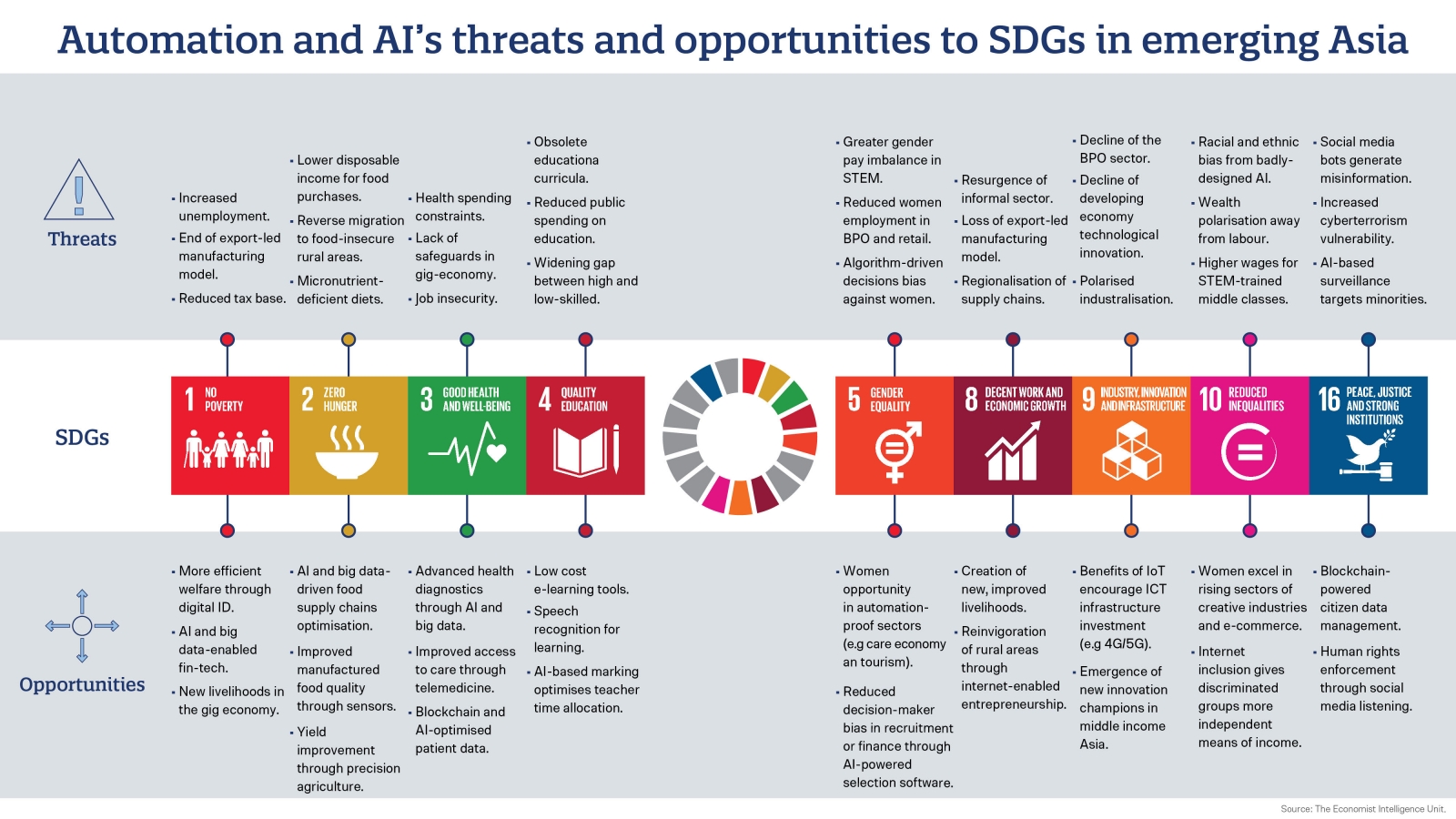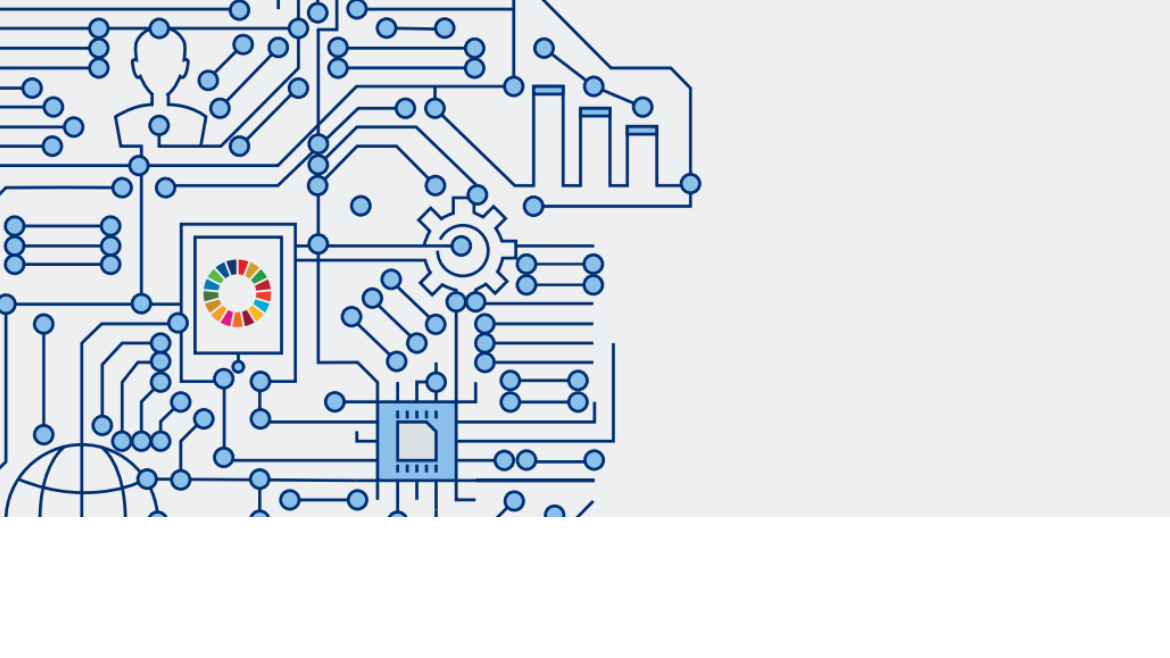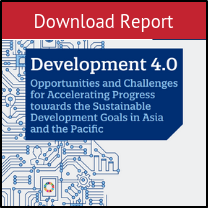Automation, artificial intelligence (AI) and other innovations of the Fourth Industrial Revolution are set to drastically change society, promising extraordinary benefits including increased productivity and improved public services. However, these innovations are also fuelling growing techno-anxiety. Unemployment is the most commonly discussed threat, with labour organisations, governments and economists all voicing concern that human workers may be displaced at an unprecedented scale and speed, which could worsen inequality, undermine social cohesion and increase poverty. Critics have also warned that emerging economies may be at risk of “premature deindustrialisation” (the early decline of industry as a share of economic output) as Western economies reshore production and embrace automation.
In a recent report we wrote for the United Nations Development Programme, we focused on the potential impacts of the Fourth Industrial Revolution in emerging Asia—both negative and positive. On the one hand, the manufacturing sectors that underpinned East Asia’s development “miracle” are at risk of automation, while robotic process automation is threatening the service industries that are driving GDP and employment growth in countries such as India and the Philippines. Millions in Asia’s emergent middle class could slide back into poverty, negatively affecting progress towards at least nine Sustainable Development Goals (SDGs). On the other hand, these same innovations are credited with a range of positive impacts, from improving social service delivery to providing new revenues in the digital economy—a sector in which Asia is flourishing. This means that automation, AI and the new digital economy also have the potential to accelerate progress towards the SDGs.

The impacts of these innovations are not pre-determined, and human choices will shape the societal outcomes brought about by this era of technological change. Governments and the private sector will need to take steps to manage the risks and maximise the upsides of automation and AI across the three domains of sustainable development: economic, social and environmental.
Economic: Drawing on the latest technological, geopolitical and policy tools, governments must develop economic policies—particularly growth strategies—that leverage new opportunities and recognise the flaws of outdated development models, including gruesome factory conditions, limited protections for workers and environmental harm. The digital economy shows particular promise as a new growth paradigm. Unlike manufacturing, in which Asian firms took decades to catch up and compete with the West, the timelines are compressed in a digital economy, allowing home-grown firms to quickly dominate their own markets. Digital platforms are especially powerful innovations, leveraging “demand” economies of scale instead of supply economies of scale; every participant joining the network makes the platform more valuable, whether drivers and passengers in ride-hailing services or sellers and buyers in e-commerce.
Social: Automation, AI and the new digital economy can have a positive impact on social outcomes. For example, governments are already adopting AI, machine learning, big data and blockchain to improve public services. By increasing efficiency and lowering costs, AI can free up government resources to focus on critical areas and reach those most in need, all of which supports attainment of the SDGs. The list of possible applications is long: machine learning can improve infectious disease monitoring; smartphones can help people access AI-based medical diagnoses, or human expertise where there are no local specialists; AI, satellites and big data can help to improve disaster responses, particularly humanitarian relief efforts; and “smart schools” can leverage AI to personalise education. Social protection policy can also play a critical role in mitigating or offsetting the negative impacts of automation, including unemployment. In Asia, there is considerable variation in the scale and scope of such measures and governments will need to think proactively about ways to tailor policies to suit their individual circumstances.
Environmental: Emergent technologies offer numerous environmental and ecological benefits: real-time analytics can improve energy efficiency and reduce waste; 3D printing and rapid prototyping can allow firms to experiment with new products and designs using a fraction of the industrial energy required by conventional manufacturing processes; precision agriculture can help farmers to identify problems, respond to threats and tailor their use of inputs, generating powerful benefits in terms of sustainability and reduced food waste; and autonomous systems can support mining and resource extraction by improving safety. Asian governments can also acquire technologies and develop appropriate regulations to support environmental protection and conservation, and provide mechanisms that ensure local competitors benefit from new technologies.
Whichever route countries take, it is useful to remember that anxiety and dystopian predictions have accompanied every new phase of innovation. Governments, public institutions, the private sector and civil society can influence the impact of the Fourth Industrial Revolution by managing the risks and guiding innovation to support positive economic, social and environmental outcomes. A forward-looking and proactive approach is critical to ensuring that the choices made by these actors lead to prosperous, inclusive and productive societies.





